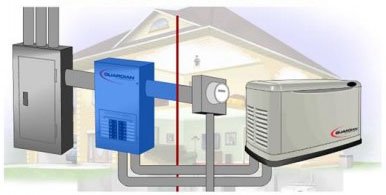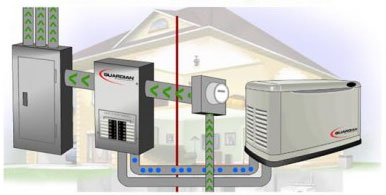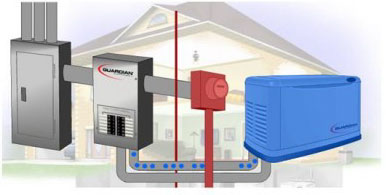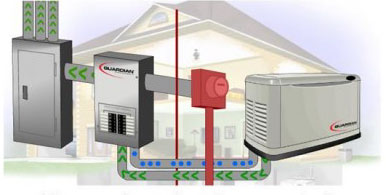How Do Standby Generators Work?
Here are some illustrations that should help you understand how the generator powers your critical circuits during a power outage.
(Air-cooled model shown in a typical setup)
Critical Circuits Transferred into the Generator Load Center

The circuits that have been selected to be on the generator are physically moved from the existing house panel into the new Generator Load Center (ATS / Load Center) shown in blue.
Generator Monitors ComEd into Generator Load Center Power – in “Standby” Mode

During normal operation, the generator is in standby mode and is constantly monitoring the flow of utility power (from ComEd) supplying the electricity to your critical circuits.
A power Outage is Identified and the Generator Starts

When a power outage occurs, the generator waits a few seconds to confirm it is not just a momentary outage; When this is confirmed, it starts the engine and prepares to transfer over the electricity that is now being produced.
Generator Signals Load Center to Switch to Emergency Power

After warming up for a few seconds, the generator signals that it is ready to supply power. The ATS / Load Center located in the house then switches over to allow the power from the generator to flow through to your critical circuits.
The generator will continue to supply electricity for the duration of the power outage. When the utility power is restored, the generator waits briefly before signaling the ATS Load Center to transfer back over, to make sure it is consistent.
The generator then switches back to Standby Mode. It will continue to run under “no load” for a brief period while the engine cools down, and then the generator will shut itself down.


